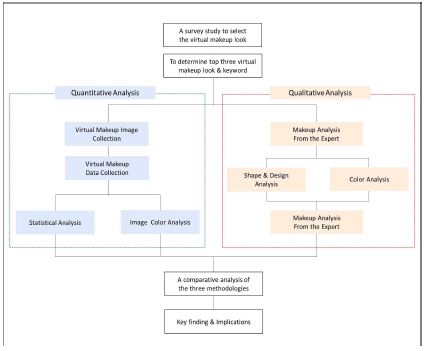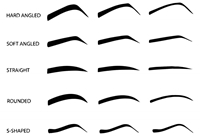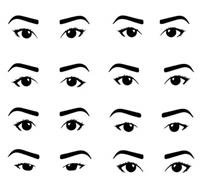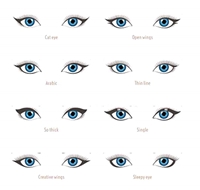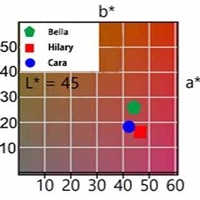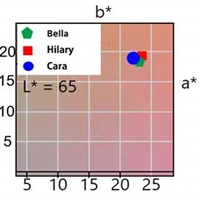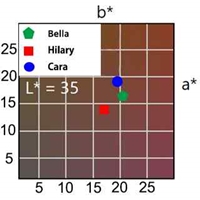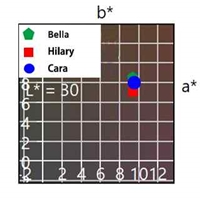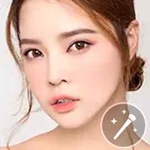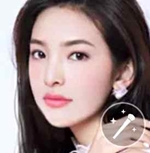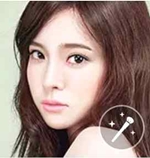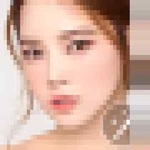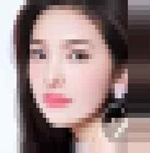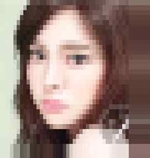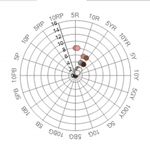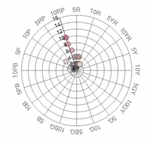
A Quantitative and Qualitative Study on Virtual Makeup of Instant Beautifying Application - Focus on Color and Shape
Copyright ⓒ 2018 The Digital Contents Society
This is an Open Access article distributed under the terms of the Creative Commons Attribution Non-CommercialLicense(http://creativecommons.org/licenses/by-nc/3.0/) which permits unrestricted non-commercial use, distribution, and reproduction in any medium, provided the original work is properly cited.

Abstract
Inspired by the increasing popularity of cosmetic-related mobile application as a tool for instant beautification, the present study examined colors of virtual makeup templates and makeup looks. A survey study was performed by thirty-six respondents to determine the top three desirable virtual makeup templates among nineteen templates. The templates of ‘Bella’, ‘Hilary’ and ‘Cara’ were then analyzed by makeup specialists and color experts for the evaluation of their makeup design and colors. Each color feature of three makeup templates were also evaluated through statistical analysis of ANOVA on the measure of L*a*b* crossed with five types of face elements on three types of virtual makeup images. Overall results indicate that Korean female users in their 20s and 30s preferred a similar makeup concept appeared in makeup template and key worlds. They also preferred a pale skin tone with higher lightness and a slightly higher saturated lip color as an emphasis than other features.
초록
본 연구는 화장품 앱이 제공하는 가상 메이크업 템플릿과 메이크업 룩의 관계를 조사하였다. 한국의 20대 및 30대 여성 34명을 대상으로 설문조사한 결과, 19개 가상 메이크업 템플릿중 ‘Bella’, ‘Hilary’, ‘Cara’ 등 3개를 가장 선호하며, 이에 상응하는 메이크업 룩은 각각 ‘섹시’, ‘클래식’, ‘내추럴’인 것으로 조사되었다. 전문가의 정성적 평가와 통계적 분석에 의한 정량적 평가를 통해 이들은 메이크업 템플릿과 유사한 메이크업 룩을 선호하고, 전반적으로 고명도의 연한 피부색과 중명도의 밝은 입술색을 선호하는 것으로 분석되었다.
Keywords:
Mobile Cosmetic Application, Makeup Look, Makeup Key Word, Virtual Digital Color, Virtual Makeup키워드:
메이크업 어플리케이션, 메이크업 룩, 메이크업 이미지, 디지털 컬러, 가상 메이크업Ⅰ. Introduction
1-1 Research Background and Objective
With the shift from desktop PCs to mobile platforms, digital revolution has introduced consumers to a new cosmetic shopping experience. Now consumers use mobile devices, which give more consumers instant access to anything from anywhere [1]. In 2016, National Statistical Office (NSO) reported the online shopping transactions by product group as follows: cosmetics (44.4%), food (37.1%), apparel (31.6%), and lifestyle and car accessories (25.4%) [2]. The highest growth rate was recorded in cosmetics sales. In particular, cosmetics sales rate on mobile devices was 9.0% higher than online shopping on other platforms. This year, the growth rate of the cosmetics purchase rate on mobile platforms is 0.9% higher than the previous year;, and it indicates that the purchase of cosmetics through mobile devices is gradually increasing.
The rapid surge in mobile sales has also led to the strengthening of the trend of cosmetics-related applications development. Some beauty applications provide a virtual makeup service for a user to test out the look without physically applying any makeup. Such applications provides a variety of makeup looks to be applied on all facial features - skin, lip, nose, cheek, eyes, eyebrows, etc.
The popularity of such virtual makeup applications is influenced by the growing interest in visual social media. The first impression may seem more important on a digital platform to increase the number of followers. It may be time consuming to apply makeup every time you post a selfie. The users have been searching for easier and simpler ways to overcome such difficulties, - and a virtual makeup application is the perfect solution.
The main purpose of applying color makeup is to enhance our beauty without any medical treatment. Makeup can be classified into two types: skin makeup and color makeup. The former includes preparing the foundation color of the skin. The latter includes color makeup of lips, eyes, eyebrows, cheeks, and eyelashes. Each element of the face plays an important role in forming the makeup image as a whole. It takes at least thirty minutes to apply natural makeup look, which is quite a long time. A news article revealed that “women spend two years of their life applying makeup, splashing more than £12,000 on cosmetics” [3]. It indicates that women spend at least 30 minutes a day applying makeup.
Makeup Plus is one of China’s most popular beauty applications due to its easy-to-use interface and the excellent face detection feature. It is a virtual makeup application that has gained over 100 million users worldwide since its launch a year ago [4]. The application first detects all features of a user’s face, then the “‘virtual makeup template”' is applied as per the through the selection of a makeup concept. This template has standard color and shape values for each makeup concept, which can be selected by the name format and image representation . A variety of selfie makeup templates are provided such as natural, romantic, elegant, ethnic, sexy, modern, and retro.
Virtual makeup provides an instant beautification service to the app users. It offers a new makeup selfie image and allows to change the impression only with a few touches. Further, virtual makeup removes flaws of the skin and accentuates other features of the face. It helps users regain confidence and fulfill the desire to transform themselves by using different makeup looks [5]. The psychologist Gordon Patzer, Ph.D. stated “even the smallest tweak to your appearance can set off a positive domino effect – it can make you feel more attractive and more confident [6].” It can be interpreted that all the minor changes in makeup factors, such as shape, color, and features of the face; would combine to bring a major change, which would create a desired impression. However, there are no previous studies on virtual makeup concepts, colors, and the available designs for virtual makeup templates. This research can be used to assess virtual makeup designs and concepts.
The purpose of this study is to investigate the designs and colors of makeup templates by analyzing the applications used on mobile devices, and also to determine the preferred makeup looks among Korean women in their 20s and 30s. The virtual makeup template will also be analyzed by makeup specialists and color experts for its makeup design and colors. The study will investigate each color feature of these makeup templates through statistical analysis, and the results will be used for future application development purposes.
From application development to color and design selection, every factor directly impacts the consumption of beautifying applications. As a makeup specialist and a color researcher, we will conduct a practical study of the emerging market for virtual makeup that has expanded its spectrum to real cosmetics applications developed in collaboration with global cosmetic brands.
1-2 Theoretical background
There are several makeup applications and beauty cameras in the app market – LOOKS, VSCO, MOLDIV, SNOW, etc-, which originated from digital image retouching devices such as Adobe Photoshop. LOOKS is a makeup camera application which has 33 different makeup filters to create virtual makeup experiences [7]. VSCO captures photos in the application and allows users to edit with its filters. It is expanding its borders to beautifying functions [8]. MOLDIV offers an all-in-one photo editor which satisfies everyone [9]. SNOW is characterized with its special features from virtual stickers to augmented reality and photographic filters [10].
There have been past studies mainly on the cosmetic mobile application and the potential features and functions of the application might offer similar virtual makeup to users. For example, Jain et al. developed an imaging application which enables users to use their smart phone to get useful and immediate professional advice and judgement from expert when choosing cosmetics [11]. Lee and Lee proposed a mobile service for the recommendation of cosmetic product using individual skin type based on big-data analysis [12].
A study shows that it takes 7 seconds to make a first impression and the first impression is usually made by a person’s face. According to a previous study by Kang, the interpretation of face appearance affects the whole image of a person and facilitates interpersonal communication [13]. People with attractive faces are believed to have positive personalities, greater abilities, and higher moral standards as compared to unattractive people [14]. Despite the unique facial features, makeup can change face shape to achieve an appropriate makeup image [15]. It has been suggested that makeup can help create a positive face perception by increasing attractiveness [16]. For example, Kim and Kim have claimed that the face perception can be adjusted even with a slight change in the eyebrow shape [17].
The colors is one of the most important factors in delivering makeup images. “It is very important to apply colors in the most appealing way to achieve the desired makeup look [18].” A previous study states that color makeup plays an important role in the appearance of skin color [19]. In particular, it has been argued that blusher has the maximum impact on how the actual skin color is perceived [20].
Makeup looks can be classified into 12 groups based on the key makeup concept - natural, romantic, pretty, elegance, classic, modern, ethnic, gorgeous, pop active, sexy, and retro looks [21].
(1) Natural Makeup Look
Natural makeup looks fresh, soft, and perfectly natural. Because it looks like one isn't wearing any makeup at all, it makes one look comfortable and friendly . It uses very neutral colors, mainly beige, ivory, yellow, olive green, brown, and khaki [22]. In addition, natural makeup emphasizes the natural state of being as it involves minimal touches of makeup and does not make you look “artificial” [23]. The basic requirement for natural makeup look is bright and glowing skin.
(2) Romantic Makeup Look
Romantic makeup is usually applied for a date or a wedding [24], although it is suitable for any warm occasion. The romantic vibe is expressed in bright colors, mainly light pink and other soft pastel colors like yellow and purple. Pink color is perceived as a romantic color, closely related to a soft, shy, sweet, and feminine image, depending on lightness and saturation. It is widely used in lipsticks. In addition, brides prefer pink as the main color for wedding makeup [21].
(3) Elegant Makeup Look
Elegant makeup emphasizes on a sophisticated and luxurious finish. Elegance can be expressed with light pink or purple. Elegance has a feminine impression; however, it is different from gorgeous, and natural looks [25]. In addition, different shades of purple are mainly used to present a typical elegant and soft feminine image. Oh argued that the elegance concept is well presented if one’s skin looks pale [26]. This look focuses on a calm yet polished woman [24].
(4) Classic Makeup Look
A classic makeup is often a universal favorites that has been known for its timeless and genuine beauty, just as seen on famous Hollywood actresses or the members of a royal family. The colors consist of brown, beige, dark brown, gold, burgundy, and navy. The makeup focuses on the lips, with a subtle deep eye shadow look with ivory color base and dark brown or burgundy color to deepen the eyes. The skin looks medium coverage beige yet flawless, with a highlights to make the face more sophisticated. For the lips, a matte- type wine or reddish-brown lipstick is usually applied, in line with the other makeup colors [22].
(5) Modern Makeup Look
The modern makeup is a combination of sophisticated and simple looks. It is utilizes white, black, and other achromatic colors, and blue-gray colors. For this look, a dark color tone dominates the color scheme in conjunction with light shades [22]. Gray has an image of sophistication, modesty, and stability. It is well suited to white skin color. Black has a sophisticated, decadent, mysterious, noble, and majestic image [27]. The makeup colors for modern image are arranged in a monotone manner and the eye shadow is highlighted [28].
(6) Mannish Makeup Look
Mannish makeup derives from the theory of rationalism and masculinity [29]. It emphasizes on the masculinity in women by adding simple man-like factors. The makeup emphasizes the eyebrows and mainly uses dark and gray colors to apply thick or precise makeup to convey the idea of a dignified woman. The skin makeup should either be matching the skin tone or should be slightly darker than the skin tone to emphasize a masculine look. The blush makeup should be eliminated to avoid the femininity of rosy cheeks. It is advisable to slightly contour the face by using a darker shade of the skin color.
(7) Ethnic Makeup Look
Ethnic means connected with or relating to different racial or cultural groups of people [30]. The primary colors are widely used for this makeup to express the styles of different ethnic groups through colorful eye shadow makeup, which resembles their use in African fashion - gold, green, yellow, gold, smokey brown, and other vivid colors. Since most features of this makeup focus on the round shape of the eyes, the other facial features are not emphasized. For the lips, a lip line of nude beige lip color is preferred. The skin should be in dark beige to look healthy and ethnic without any contours. The eyebrows should be in a straightened design using black [21].
(8) Gorgeous Makeup Look
Gorgeous means “glamorous” and “luxurious,” and it is characterized by bold and colorful styles of makeup. Lee and Lee defined the makeup as a bold, intense, and tempting aspects of femininity [12]. This makeup look is sensually tempting and extravagant. The skin makeup is a tone or two darker than the actual shade with a glossy finish. The eyebrows and eye lines should be boldly defined with glitters [31].
(9) Sexy Makeup Look
Sexy is also referred to as “sensual,” and “provocative.” It appeals to the opposite sex through full glossy lips and emphasizes the sexual attraction with mature and sensual beauty. Low brightness and low saturation colors are mainly used in this makeup. The eye makeup and lip makeup should use contrasting colors for emphasis. Gray and blue colors are used as eye shadows. The high saturation full red lipstick is applied to convey a strong sense of temptation, Shades such as red, wine, and purple are widely used, and gloss is used to lend the lips a shiny texture [21]. The shape of eye line should be long, and thick, with blue-gray, and silver-gray colors. Eyebrows are treated with a relatively thick arch shape, and lips are given a curve shape.
(10) Pop Active(Pop Art) Makeup Look
This makeup is inspired by Pop Art. It is related to Andy Warhol's work and has a pop art look. It applies fun and playful concepts that use black or white, along with a clear and strong tone of colors [21].
(11) Pretty Makeup
Pretty makeup emphasizes the cute and sweet image of a lovely young girl. The color scheme includes the bright, vivid hues of pink, yellow, and green [21].
(12) Retro Makeup
Retro is the abbreviation for retrospective, which indicates nostalgia for the past. It is characterized by reconciling the style of the past with the modern fashion. Retro makeup looks come from different periods of history - the signature looks from the 1900s to 1970s [32]. It covers a broad spectrum of signature makeup looks - 1910s Clara Bow, 1920s Louise Brooks, 1930s Greta Garbo, 1950s Marilyn Monroe, etc. For example, Clara Bow, a famous actress of this period, had crescent-shaped thin eyebrows artificially refined using a pale skin makeup without any blush. By expressing past signature looks in various colors, it transforms those looks into contemporary looks [21].
3) Makeup Features of Form and Shape
Makeup is consisted of lines and shape which is formed by lines. Lines can present classifications according to the path and direction that are most commonly used in makeup. The line shows vertical and horizontal directions [32]. These lines formulate a three-dimension in the human face features – a length of a line, thickness, edge direction, and bending curves – which can change the image of an individual [33].
Human face can be classified into six shapes - oval, round, square, diamond, heart, and oblong [34]. Each shape has its own image and there are different makeup styles to overcome the facial limitations.
Most Koreans have eyes that can be classified into three types - standard eyes with a folded eyelid, small monolid eyes, and ascending eyes [35].
There are six types of eyebrow shapes - standard, soft angle, hard angle, straight, rounded, and arch [34]. The change in the eyebrow shape can alter an individual’s impression and image [34]. For example, a thick eye brow can be portrayed as masculine or a long eye brow can be look innocent.
Also lip aesthetic differs in sizes and shapes. An ideal lip proportion is known as 1:2 upper to lower lip ratio. Most women use lip liner or concealer to amend their lip shape - minimize a larger upper lip or maximize a thin lower lip [36].
4) CIE L*a*b* Color Space
The International Commission on Illumination (CIE), the authority on the science of light and color, has defined CIE L*a*b* color system as a color space obtained by applying tristimulus values L*, a*, b*[37]. The value of L*, represents the lightness, which increases from the bottom to the top of the three-dimensional model. The larger the value, the closer it is to white light (100=white). The smaller the value, the lower the brightness, (0=black). The a* axis indicates the range from green (-) to red (+) and the b* axis the range from blue (-) to yellow (+) [38].
It allows the users to understand color differences in numerical terms and identify inconsistencies to evaluate color values [39]. This system correlates well with how the human eye perceives color. It is practical to express color in numerical terms and to measure color differences. The color differences that you perceive correspond to the distance on the axis when measured numerically. The L*a*b* colorimetric space makes it easy to distinguish color differences by the hue of the skin color, the degree of red, and the degree of yellow perceptually.
Ⅱ. Research Methodology
The current study was performed through both qualitative and quantitative study as illustrated in Figure 1. The two types of the measures of makeup color and shape analysis were analyzed using (1) color and shape analysis and (2) statistical analysis. A comparative analysis was performed to examine virtual makeup color paired with statistical analysis, key word analysis, makeup shape and design analysis from the makeup specialists, and detailed color analysis by color experts.
2-1 Makeup Image and Device Selection
A user preference survey was conducted to determine the most desirable makeup template.
Table 1. illustrates the demographic profile of thirty-four respondents participated in the present work. The demographic profile of thirty-four subjects participated in the study. The respondents aged 20 to 38. The result of survey indicates that over half of respondents (52.9%) prefer Apple iPhone for their smart phone brand.
2-2 Data Collection for Virtual Makeup Application on Mobile
The digital makeup dataset was collected on iPhone X mobile device which has been selected as the most widely used by the user preference survey. The measurement was conducted under D65 illuminant and approximately 40-50cm distance at a 2° standard observer viewpoint system. The display settings for iPhone X was at full brightness with a true tone color as tested in the mobile industry. The experiment was collected by three different makeup looks on Meitu’s Makeup Plus Application – Bella, Hilary and Cara. The saturation level was placed to the application default setting at 70.
2-3 Virtual Makeup Data Color Measurement
The data for virtual makeup has been measured by Adobe Photoshop CC Color Analyzer on Apple Macbook Pro 2017. Each feature was collected three times in the similar locations - skin, lip, eye, cheek, and eyebrow in CIE L*a*b* values. The skin color was measured from the forehead, area under the eye, and chin. All other features were measured in three different areas to collect different shades of color – inner, outer, and the middle parts.
2-4 Virtual Makeup Shape and Design Analysis
Table 2. illustrates the Makeup Shape and Design Analysis Tool.
An interview was conducted with three makeup specialists to find out what color and shape were used for the three makeup templates. The makeup artists have been in the industry for a minimum of five years field experience. The analysis used conducted with a makeup Shape and Design Analysis Tool from a previous study by Kim and Kim [17].
2-5 Virtual Makeup Color Analysis
An interview was conducted with two color experts to find out the colors in hue and tone for the three makeup templates. The color experts have a master degree in the field of color and have been working in the industry for a minimum of three years field experience. The analysis used conducted with a Color Analysis Methodology from a previous study by Yang [13].
Ⅲ. Research Results
3-1 Quantitative Color Analysis
A series of analysis of variance (ANOVA) were performed on the color measure of L*, a* and b* crossed with five types of face elements with three types of virtual makeup images. The purpose was to examine any statistical significant differences that may exist among makeup groups of interest. The results indicate that the main effects of the type of face element and virtual makeup image was not significant (p > .05) for all three color measures of L*, a* and b*. Close inspection using multiple comparison of Turkey test revealed that the measures of a* and b* of lip color for the makeup image of Hilary were found to be significantly greater than those for Bella and Cara (p < .05). Also, for the measures of a* and b* of eye shadow color, the values of Hilary are significantly less than those of Bella and Cara.
Table 3. displays the color data analysis result in L*a*b* values. The values of each makeup templates is plotted on a separate graph by five features – skin, lip, blush, eye shadow, and eye brow. The plot graph indicates the value of red (a*) and yellow (b*) on the axis. The L* value indicates the lightness which is included in the color planes of plot graph.
The lightness and the color of the skin is relatively closely plotted. Hilary and Cara had similar skin colors overall which was higher in all three factors. However, Bella showed a slight difference in lightness (68.42) compared to Hilary (66.58) and Cara (66.60). Also the color values of Bella was relatively lower overall - red (18.48) and yellow (17.53).
There is a greater difference in lip colors for all three makeup templates. Hilary had the highest value for lightness (49.24) and redness (47.92) showing relatively less yellow (16.47) color. The yellow (25.62) is the strongly shown in Bella compared to the redness (44.06). Bella showed the lowest lightness (44.17), which has a higher saturation. The results for Cara showed the lightness (45.72), the value of a* (43.19) and the value of b* (20.26).
The colors of the blush is plotted on each other, which shows little difference in values. Of all, Bella shows the highest lightness (66.27) compared to Hilary (66.08) and Cara (64.00). Hilary had the highest value of red (23.18) closely followed by Bella (23.10) and then Cara (22.04). The yellow is appeared the least on Bella (18.90) then by Hilary (19.27) and Cara (19.52).
The results of the eye shadow differ in all the factors - lightness and the value of red and yellow. The lightest eye makeup is Cara (48.32), then follows Hilary (42.96) and Bella (34.14). The eye shadow templates use neutral and brownish colors, which have less red than yellow in average – the redness of Bella (20.71), Hilary (16.88), and Cara (19.44); the yellowness of Bella (17.71), Hilary (14.24), and Cara (19.71).
The colors of the eyebrow showed the least difference among the other four features. The darkest shade of brows are Hilary (33.59) compared to Cara (33.42) and Bella (31.44). In terms of red, Bella showed the highest (9.46), which was almost the same as Cara (9.47). The value of yellow is Hilary (9.11), Bella (7.79), and Cara (8.37).
3-2 Qualitative Color Analysis
A interview was held with three makeup specialists to find out the makeup analysis factors in both color and shape for the three makeup templates in Table 2.
For Bella makeup, the makeup specialists identified the key word as ‘Lovely Sexy.’ The face appears as heart shape with warm yellow undertone. The eye brows are in a brown soft arch shape. Coral pink was used in the eye shadow overall with an espresso brown eye line facing upwards. The blush was applied in a 45 degree angle with a slight circular movements in color pink. The gradation outcurve coral lip color shows the loveliness in the makeup.
Hilary was described as ‘Feminine Classic.’ The oval face and bluish pink undertone well-relates to the key word. The grayish-black arch eye brows are applied with a pink horizontal eye shadow. The line follows the eye shape with a gradual curve in black for definition. The pink circular-shaped blush expresses feminity along with the fuchsia pink full lip.
The natural concept of Cara is described by the oval and pale pink undertone face. The straight grayish-brown eyebrow best suits the natural and soft makeup. Also the nude color eye shadow and the brown-black eyeliner traces the eye for slight definition. The slight hint of 45 degree angled blush in nude pink shows the minimal touches of makeup. The key word is polished with a bright sheer pink applied on natural outcurve lip.
Table 3. shows the color analysis result performed by two color experts to find out the color and tone for overall and individual features for makeup template, respectively. The colors analysis was performed after a pixelation process to focus only on colors rather than shape and design of the makeup template.
For the Bella makeup template, the colors have higher saturation than Hilary and Cara. The overall color is coral base - the skin color has yellow undertone of the skin. The lip color matches the deep yellowish red shade of the eye brow color.
The colors shown in Hilary have soft mid-tone makeup look. The overall color is pink base – the skin color has light neutral skin undertone of the skin. The coral pink lip color stands out with higher chroma than Hilary and Cara. It shows the feminity and also a focus on the lip. The eye shadow shades are in the light pink which matches the mid-tone brown eye brow.
The colors for Cara makeup consist of the most pale tone among the makeup looks. The undertone of the skin is bluish pale and the overall colors are in the pink. The lip color of light pink matches the nude eye shadow and natural brown shade of the eye brow color.
Ⅳ. Discussion and Conclusion
1) Findings and Implication
The results from key word relationship suggest a finding of a coherence. In particular, Cara was found to relate with ‘natural’ key word for both groups – respondents and makeup specialists. However, Bella and Hilary seem to be partially linked to an identical cosmetic key word. Bella was perceived as ‘sexy’ to the respondents whereas the same makeup look was specified as ‘lovely sexy’ by makeup specialists due to its coral color tones. Hilary was considered ‘classic’ by the respondents and ‘feminine classic’ by makeup specialists. Overall pattern may provide a practical implication from makeup specialists’ perspective. It further implies a makeup key word that conveys the message clearly for the individuals to visualize the makeup look.
The results from a comparative color analysis show a similar pattern by both makeup specialist and color experts; however, the color experts used more detailed term and information in color hue and tone, whereas the makeup specialists described from a color and shape aspect. Interestingly, makeup specialists used makeup key words associated with the makeup look (e.g.,lovely sexy).
Importantly, statistically significant difference in the color measures was found only in the lips and eye shadow For both red and yellow measures of the lip, the values of Hilary was found to be greater than those of Bella and Cara. The redness of the color data analysis show the same results to the statistical pattern; however, not in the case of yellowness analysis – Bella had a greater value of yellow than Hilary. For the eye shadow, the pattern from the result of statistical analysis was consistent to those from the color analysis in the red and yellow level of Hilary.
Taken together, both quantitative analysis and qualitative analysis provides the key findings of the three virtual makeup templates as follows:
1. The Korean women in their 20s and 30s preferred a similar makeup concept which was in makeup template and key words. This indicates that the most ongoing Korean makeup trend is still natural and romantic.
2. The Korean users in their 20s and 30s preferred a similar skin color and eyebrow color which showed a similar results for all three analysis.
3. The colors used in the templates are mainly soft and pale tones showing no vivid colors. The users preferred pale tone with high level of lightness for the skin color. An emphasis on the lip color is preferred with a slightly higher saturation than other features.
2) Limitations and Future Study
It should be acknowledged that the present work has several limitations. The present study was conducted on Apple iPhone X under D65 illuminant. Therefore, these results may not be replicated in a different setting involving other smart phone devices and lightings. Additionally, target sample for the study was populated only from Korean women in their 20s and 30s and, therefore potential problems might exist in that other ethnicity might perceive differently. Futhermore, user verification is needed through the user satisfaction test on the virtual makeup templates. Also, the present was conducted under the default setting of the makeup application of 70 saturation level. This work can be further augmented by using different level of saturation to provide more robust implication - other makeup application templates exist that users may react differently. In addition, this classification allowed us to compare previous makeup key concepts to the current virtual makeup templates and offers insights into color and shape on makeup application in both perspectives. Users generally do not have enough information to decide which template best suits them.
The results suggest several approaches for further research. Perhaps other ambient factors (e.g., illumination, smart phone devices, respondents) can be further examined. Other research may also address the big makeup trend in combination with a latest data analysis. Such study may provide insight into the development of virtual makeup templates also available for real makeup.
This work presented a practical implication of the emerging market for virtual makeup, which is expanding its spectrum to real cosmetics market in collaboration with global cosmetic brands. It is expected that the examination of the virtual makeup template would help develop various colors and designs in relation to user preference for the upcoming virtual makeup development to expand the consumption of beautifying applications.
References
- Euromonitor 2018 [Internet]. Available: https://blog.euromonitor.com/2018/05/new-trends-digital-marketplaces.html
- National Statistical Office [Internet]. Available: https://kostat.go.kr/portal/eng/surveyOutline/2/5/index.static
- Dailymail UK [Internet]. Available: https://www.dailymail.co.uk/femail/article-3211309/Women-spend-TWO-YEARS-life-applying-make-splashing-12-000-cosmetics.html
- Meitu [Internet]. Available: https://makeup.meitu.com/en/
- E. I. Hwang, The study of correction make-up for enhancing facial likability, Master's thesis, Hansung University, Seoul, (2013).
- Women's Health [Internet]. Available: https://www.womenshealthmag.com/beauty/a19940453/get-a-new-look/
- LOOKS [Internet]. Available: https://www.theweek.co.uk/77414/looks-real-make-up-camera-app-offers-virtual-makeover
- VSCO [Internet]. Available: https://vsco.co/about/company
- MOLDIV [Internet]. Available: https://jellybus.com/moldiv
- SNOW [Internet]. Available: https://en.wikipedia.org/wiki/Snow_(app)
- J. Jain, N. Bhatti, H. Baker, H. Chao, M. Dekhil, M. Harville, N. Lyons, J. Schettino, and S. Susstrunk, “Mobile Cosmetics Advisor,”, Proceedings of IS&T/SPIE Electronic Imaging, San Jose: CA, p1-10, (2010).
- U. Y. Lee, and I. S. Lee, “A Study of Hair and Make-up of Total Coordination Factor”, Journal of the Korean Society of Costume, 54(6), p15-26, September), (2004.
- E. J. Kang, Influence of the Eyebrow Make-up on Facial Image, Master’s thesis, Hansung University, Seoul, (2003).
- L. Zebrowitz, J. Montepare, “Social Psychological Face Perception,”, US National Library of Medicine National Institutes of Health, 2(3), p1497, May), (2008.
- B. H. Han, A Study on Makeup Styles for Enhancing Image, Ph.D. dissertation, Sungshin Woman’s University, Seoul, (2009).
- Y. H. Lee, A Study on Perception of Face Image of Point Make-up, Ph.D dissertation, Sungshin Woman's University, Seoul, (2001).
- Y. S. Kim, and S. H. Kim, “A Study on the Facial Shapes and the Eyebrow Make-up”, Journal of the Korea Society of Beauty and Art, 9(3), p77-92, December), (2008.
- S. M. Lee, Influence of Makeup and Color on Image Effects, Master’s thesis, Sookmyung Woman’s University, Seoul, (2014).
- K. R. Kim, Study on the Influence of Preference about the Make-up Images on the Cosmetics Purchase Intention, Master’s thesis, Sungshin Woman’s University, Seoul, (2005).
- E. J. Lee, J. O. Song, Kim I., and J. S. Yoo, “Big-data Analysis Based Mobile Services Using Individual Skin-type and Genes for Cosmetic Recommendation,”, The Korea Contents Association, 2018(5), p495-496, May), (2018.
- H. Y. Yang, Study on Standards for Developing Image Scale for Beauty Field According to Personal Color, Master’s thesis, Hongik University, Seoul, (2016).
- Y. J. Kwon, S. H. Lee, and J. H. Sun, Beauty Coordination for Stylist, Seoul, Gukje Publishing, (2009).
- S. M. Lee, Influence of Makeup and Color on Image Effects, Master’s thesis, Sookmyung Woman’s University, Seoul, (2014).
- M. H. Jo, A Study on the Preference of the Wedding Coordination, Master’s thesis, Hannam University, Daejeon, (2007).
- J. M. Ko, and J. S. Kim, “A Study of Nail Art Design Using Elegance Image,”, The Korean Society for Aesthetics and Cosmetology, 10(2), p221-226, May), (2012.
- S. H. Oh, Fashion Coordination for Stylists, Sungandang Publishing, Seoul, p52-54, (2007).
- Y. H. Park, A Study on Situational Presentations and Expressions of Make-up Colors and Images, Master’s thesis, Hansung University, Seoul, (2002).
- S. E. Jang, and J. S. Lee, Total Fashion Beauty coordination, Gyeongchunsa Publishing, Seoul, (2009).
- Y. M. Yang, “A Study on Smoky Makeup Expressed Modern Makeup,”, Korea Journal of Beauty Design, 6, p293-304, December), (2010.
- Collins English [Internet]. Available: https://www.collinsdictionary.com/dictionary/english/ethnic
- U. Y. Lee, A Study of Total Fashion Image Presentation, Master's thesis, Ewha Woman's University, Seoul, (2002).
-
J. S. Kim, and E. S. Kim, “A Study on Retro Make-up Phenomenon in Fashion Collection,”, Journal of the Korean Society Design Culture, 24(2), p167-179, June), (2018.
[https://doi.org/10.18652/2018.18.2.10]

- J. S. Park, “A Study on the Methods to Express Avant-Garde Images in Fashion Show Make-up,”, Korean Journal of Aesthetics and Cosmetology, 11(1), p185-192, February), (2013.
- H. S. Lee, Study on the shape of eye brows affecting the visual image of face, Master’s thesis, Sungshin Women’s University, Seoul, (2009).
- M. K. Kim, and H. W. Ryu, “Analysis of emotional images according to eye shapes and smoky makeup tone” , Korean Journal of the Science of Emotion & Sensibility, 14(2), p321-330, June), (2011.
- The Hottest Lip Look Right Now [Internet]. Available: https://femalemag.com.my/beauty/ideal-lip-shape-science
- S. H. Seo, “A Study on 3D Visualization for Color Analysis of Multimedia Data,”, Journal of Digital Contents Society, 19(8), p1463-1469, August), (2018.
- H. S. Kim, and H. D. Kim, “Coordination of Smart Costume based on Complementary Colors using Image Segmentation,”, Journal of Digital Contents Society, 19(8), p1453-1462, August), (2018.
- K. H. Park, and H. S. Noh, “Effective Acne Detection using Component Image a* of CIE L*a*b* Color Space,”, Journal of Digital Contents Society, 19(7), p1397-1403, July), (2018.
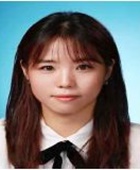
오승현(Seung Hyun Oh)
2006년 : 한국외국어대학교 스페인어학과 학사
2010년 : 영국 센트럴 세인트 마틴스 디자인 대학원 (혁신경영 석사)
2017년 : 홍익대학교 일반대학원 (색채학 박사수료)
2018년~현 재: LG 전자 뷰티카메라 프로젝트 색채 개발
2017년~현 재: Fashion Institute of Technology Korea Fashion Business Management 겸임교수
※관심분야: 디지털 색채(Digital Color), 화장품(Cosmetics), 패션 트렌드(Fashion Trend) 등
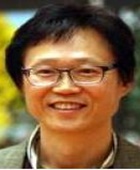
전창림(Changlim Jun)
1978년 : 한양대학교 화학공학과 학사
1981년 : 한양대학교 산업공학과 대학원 (공학 석사)
1986년 : 프랑스 파리국립대학교 유기화학과 (공학박사)
1987년~1989년: 프랑스 파리 시립대학교 연구원
1989년~1993년: 한국화학연구소 선임연구원
1994년~현 재: 홍익대학교 바이오화학공학과 교수 / 홍익대학교 문화정책대학원 색채전공 교수
※관심분야: 색채재료(Color Pigment), 미술재료(Art Material), 고분자재료 (Macromolecule), 화장품 (Cosmetics) 등
